Abstract
Both suppressor lymphocytes and serum immunosuppressive factors have been found in patients who have had major thermal burns, and may inhibit host resistance to the bacteria invariably present in burn wounds. However, the relationship and clinical importance of these two manifestations of impaired immune reactivity are poorly understood. Eighteen patients (aged 20-84 years) with full thickness burns of varying severity have been studied, and the clinical course related to the presence of nonspecific immunosuppressive serum and circulating suppressor lymphocytes. Serum factors capable of suppressing the phytohemagglutinin (PHA) response of normal lymphocytes usually appeared early and were detected in 15 of the 18 patients at some time during the illness. Thirteen of these patients developed systemic infection. Depression of the PHA response of peripheral blood lymphocytes was much less common and was associated with this finding died. No patients who did not have severe depression of the lymphocyte response to PHA died. Nonadherent leukocyte (NA leukocyte) populations exhibiting a depressed PHA response were capable of suppressing the PHA response of normal human lymphocytes and, therefore, contained suppressor cells.
Full text
PDF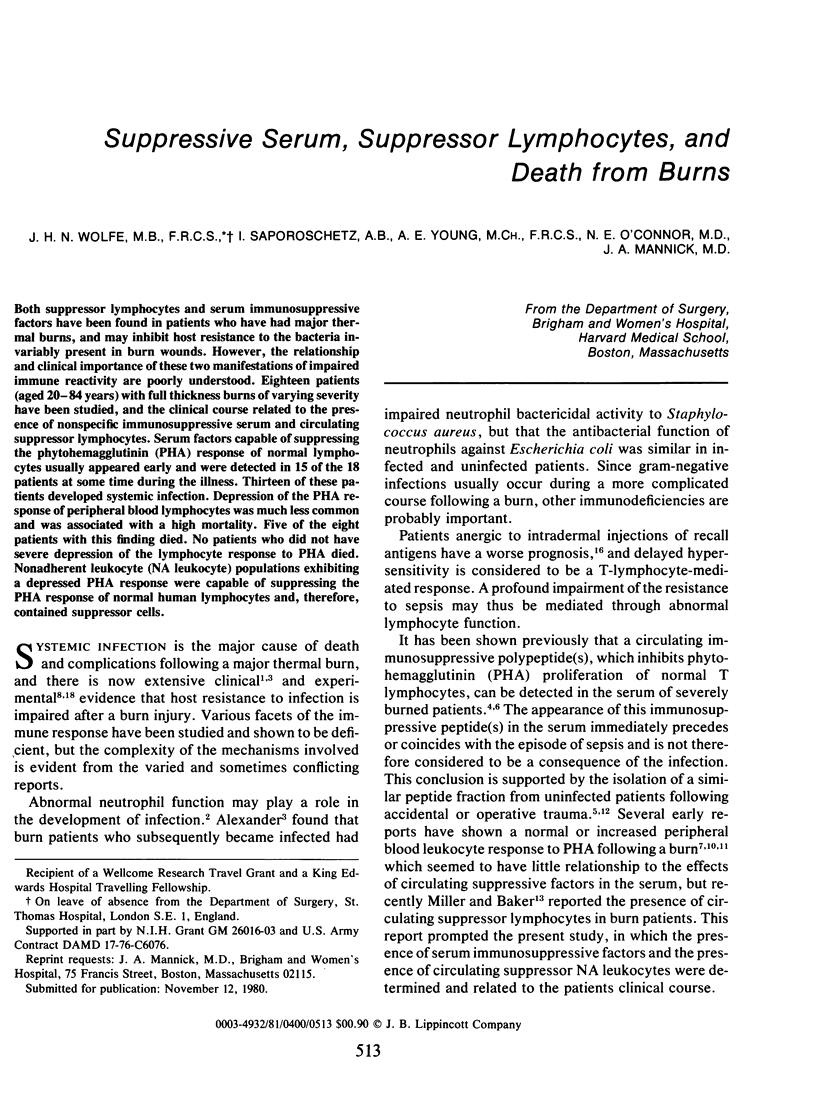
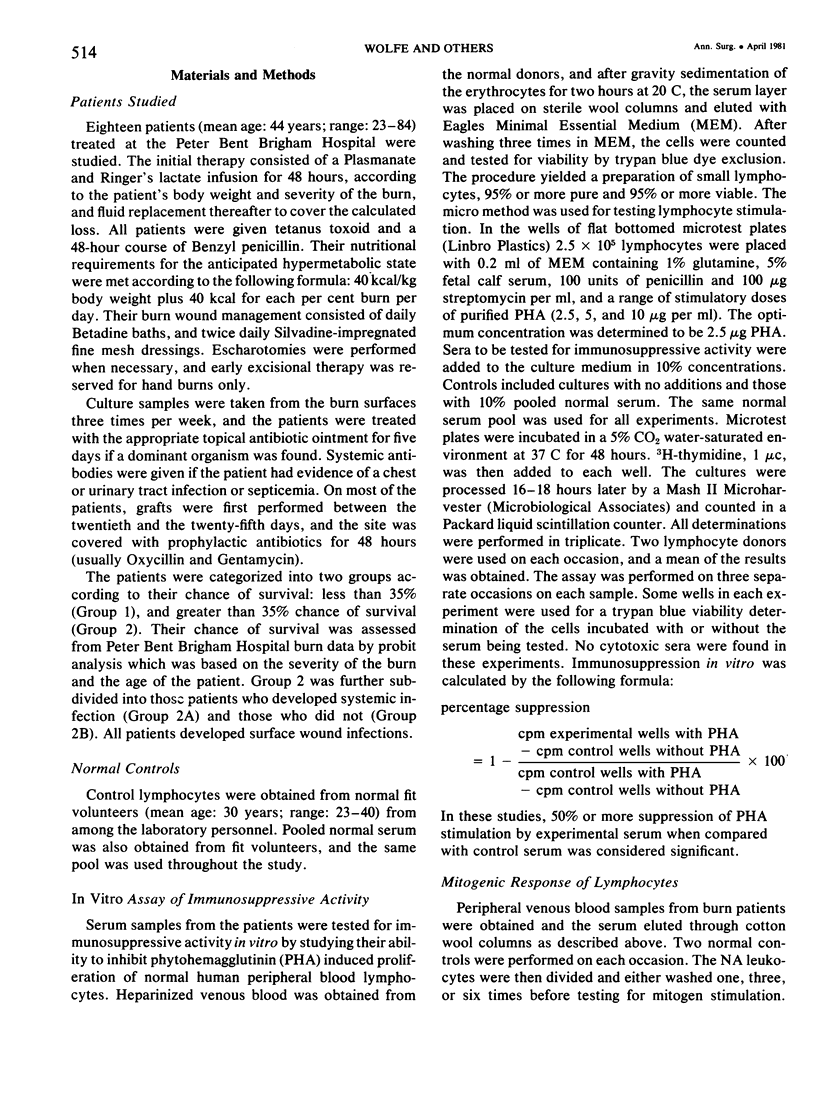
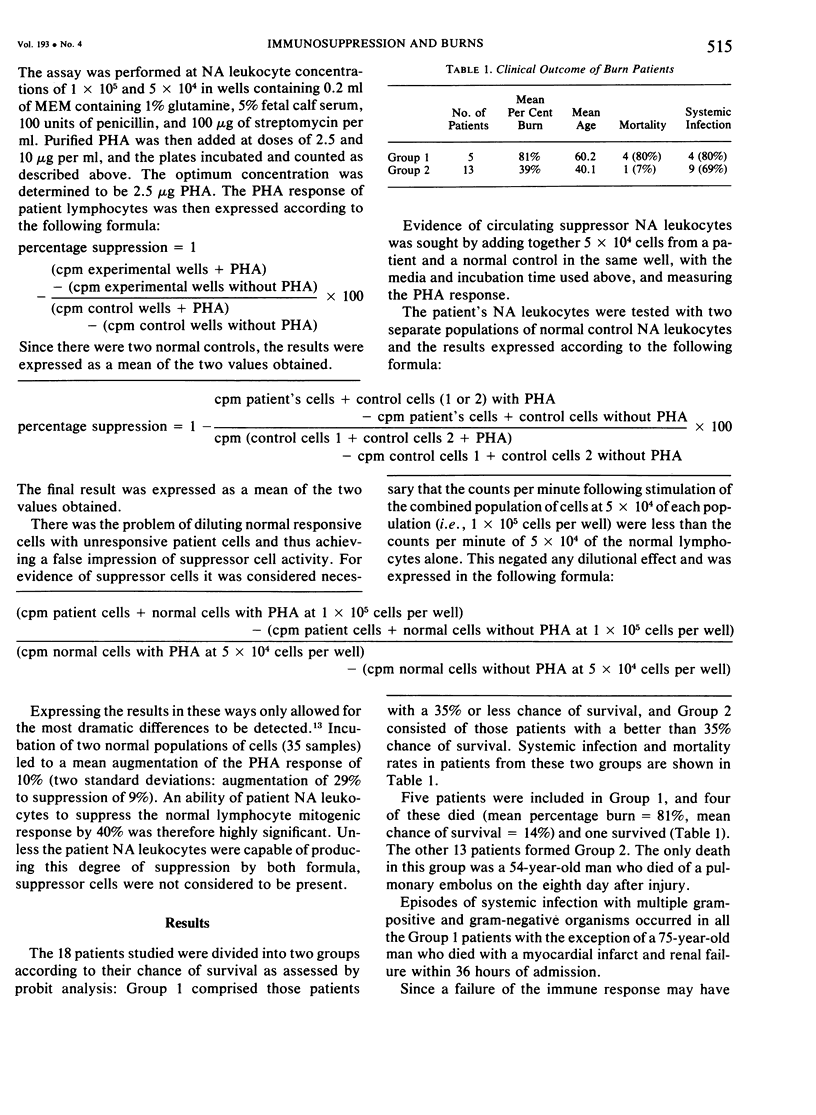
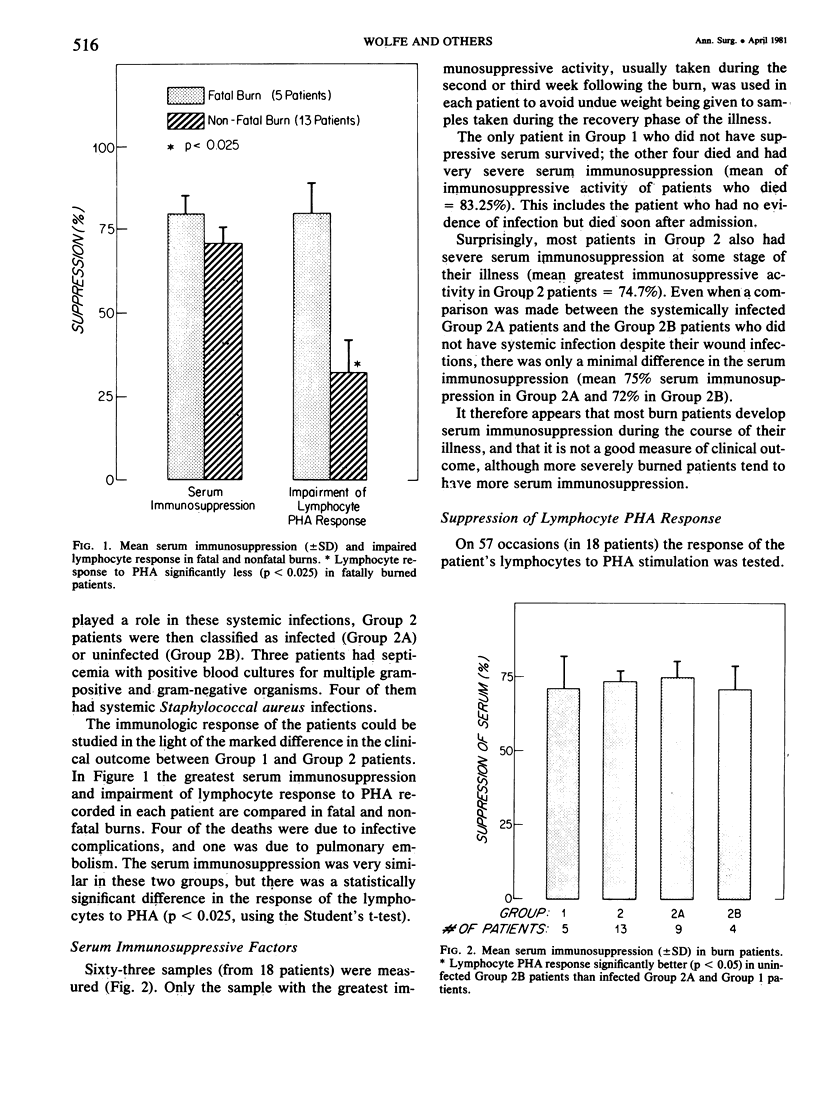
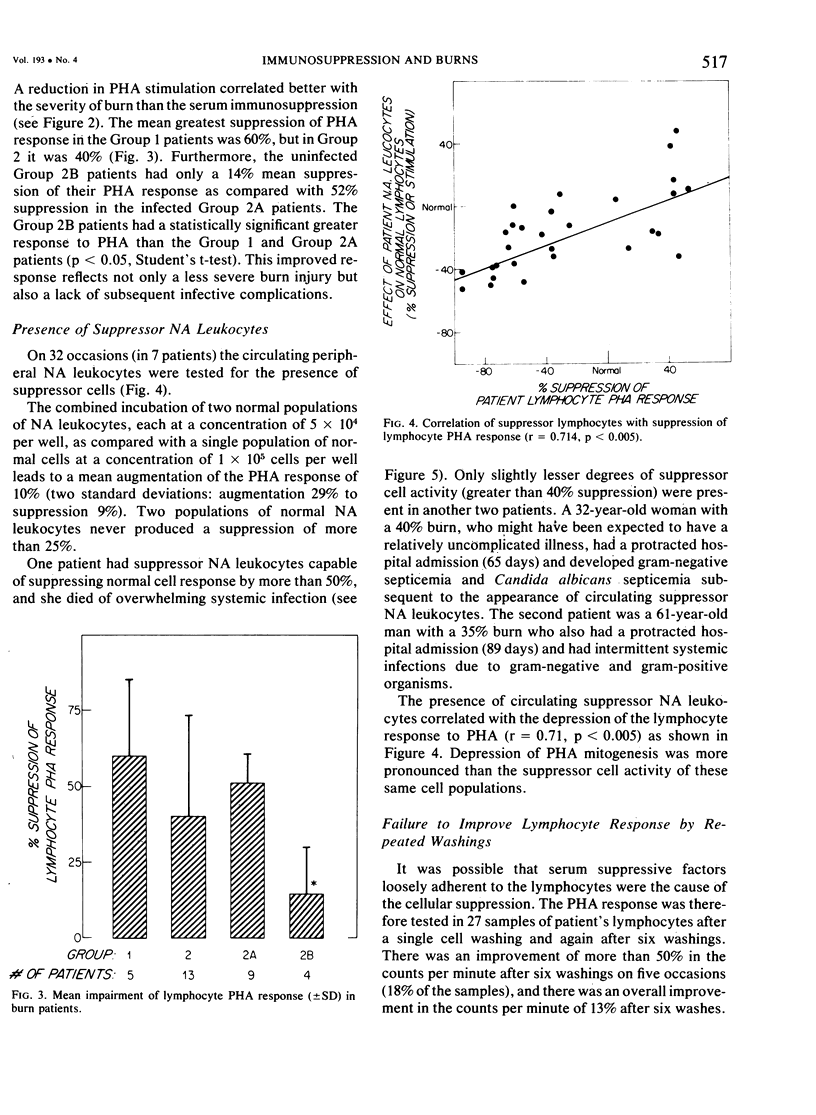

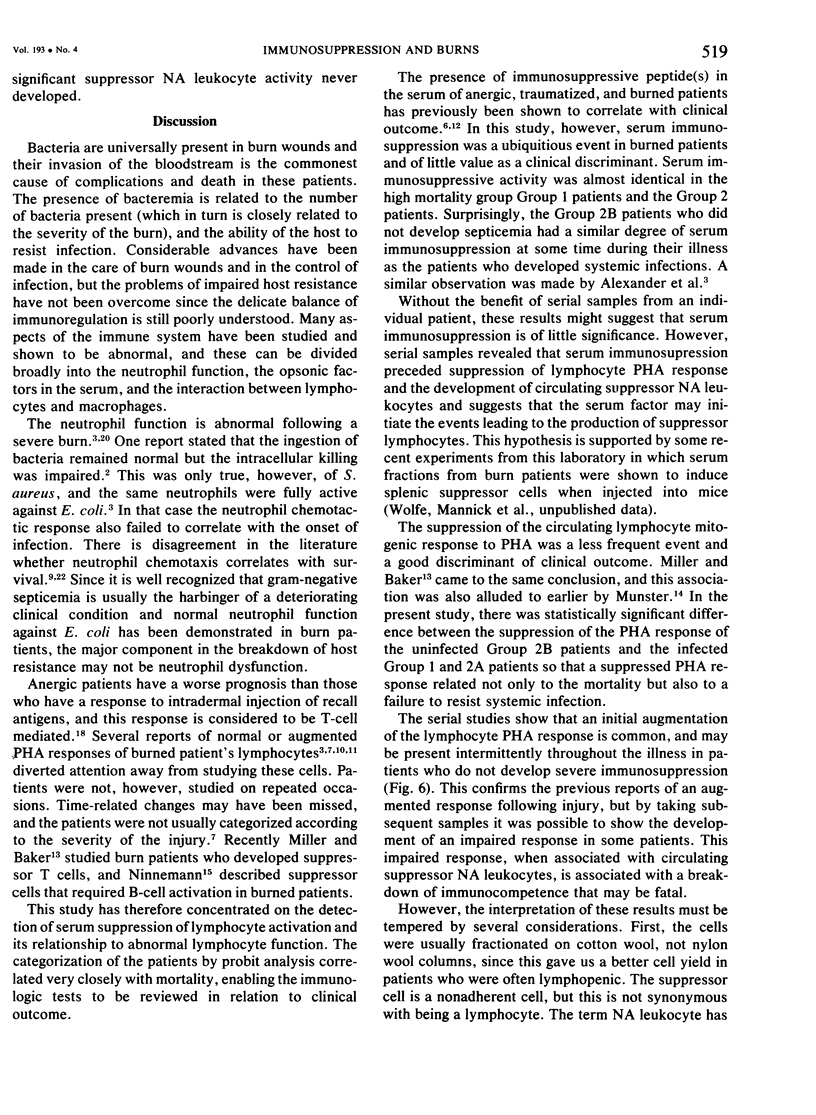
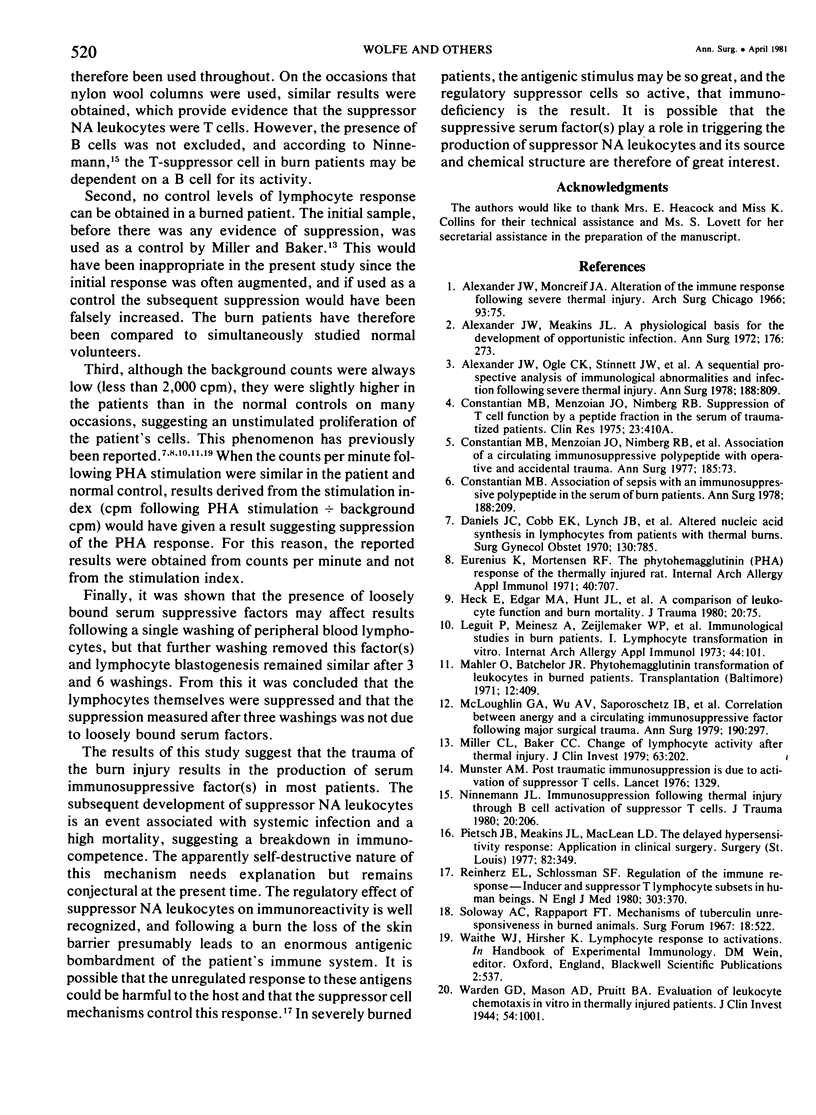
Selected References
These references are in PubMed. This may not be the complete list of references from this article.
- Alexander J. W., Meakins J. L. A physiological basis for the development of opportunistic infections in man. Ann Surg. 1972 Sep;176(3):273–287. doi: 10.1097/00000658-197209000-00003. [DOI] [PMC free article] [PubMed] [Google Scholar]
- Alexander J. W., Moncrief J. A. Alterations of the immune response following severe thermal injury. Arch Surg. 1966 Jul;93(1):75–83. doi: 10.1001/archsurg.1966.01330010077011. [DOI] [PubMed] [Google Scholar]
- Alexander J. W., Ogle C. K., Stinnett J. D., Macmillan B. G. A sequential, prospective analysis of immunologic abnormalities and infection following severe thermal injury. Ann Surg. 1978 Dec;188(6):809–816. doi: 10.1097/00000658-197812000-00016. [DOI] [PMC free article] [PubMed] [Google Scholar]
- Constantian M. B. Association of sepsis with an immunosuppressive polypeptide in the serum of burn patients. Ann Surg. 1978 Aug;188(2):209–215. doi: 10.1097/00000658-197808000-00014. [DOI] [PMC free article] [PubMed] [Google Scholar]
- Constantian M. B., Menzoian J. O., Nimberg R. B., Schmid K., Mannick J. A. Association of a circulating immunosuppressive polypeptide with operative and accidental trauma. Ann Surg. 1977 Jan;185(1):73–79. doi: 10.1097/00000658-197701000-00012. [DOI] [PMC free article] [PubMed] [Google Scholar]
- Eurenius K., Mortensen R. F. The phytohemagglutinin (PHA) response in the thermally injured rat. Int Arch Allergy Appl Immunol. 1971;40(4-5):707–718. doi: 10.1159/000230453. [DOI] [PubMed] [Google Scholar]
- Heck E., Edgar M. A., Hunt J. L., Baxter C. R. A comparison of leukocyte function and burn mortality. J Trauma. 1980 Jan;20(1):75–77. [PubMed] [Google Scholar]
- Leguit P., Jr, Meinesz A., Zeijlemaker W. P., Schellekens P. T., Eijsvoogel V. P. Immunological studies in burn patients. I. Lymphocyte transformation in vitro. Int Arch Allergy Appl Immunol. 1973;44(1):101–121. doi: 10.1159/000230921. [DOI] [PubMed] [Google Scholar]
- Mahler D., Batchelor J. R. Phytohaemagglutinin transformation of lymphocytes in burned patients. Transplantation. 1971 Nov;12(5):409–411. doi: 10.1097/00007890-197111000-00015. [DOI] [PubMed] [Google Scholar]
- McLoughlin G. A., Wu A. V., Saporoschetz I., Nimberg R., Mannick J. A. Correlation between anergy and a circulating immunosuppressive factor following major surgical trauma. Ann Surg. 1979 Sep;190(3):297–304. doi: 10.1097/00000658-197909000-00004. [DOI] [PMC free article] [PubMed] [Google Scholar]
- Miller C. L., Baker C. C. Changes in lymphocyte activity after thermal injury. The role of suppressor cells. J Clin Invest. 1979 Feb;63(2):202–210. doi: 10.1172/JCI109290. [DOI] [PMC free article] [PubMed] [Google Scholar]
- Munster A. M. Post-traumatic immunosuppression is due to activation of suppressor T cells. Lancet. 1976 Jun 19;1(7973):1329–1330. doi: 10.1016/s0140-6736(76)92658-1. [DOI] [PubMed] [Google Scholar]
- Ninnemann J. L. Immunosuppression following thermal injury through B cell activation of suppressor T cells. J Trauma. 1980 Mar;20(3):206–213. doi: 10.1097/00005373-198003000-00003. [DOI] [PubMed] [Google Scholar]
- Pietsch J. B., Meakins J. L., MacLean L. D. The delayed hypersensitivity response: application in clinical surgery. Surgery. 1977 Sep;82(3):349–355. [PubMed] [Google Scholar]
- Reinherz E. L., Schlossman S. F. Current concepts in immunology: Regulation of the immune response--inducer and suppressor T-lymphocyte subsets in human beings. N Engl J Med. 1980 Aug 14;303(7):370–373. doi: 10.1056/NEJM198008143030704. [DOI] [PubMed] [Google Scholar]


